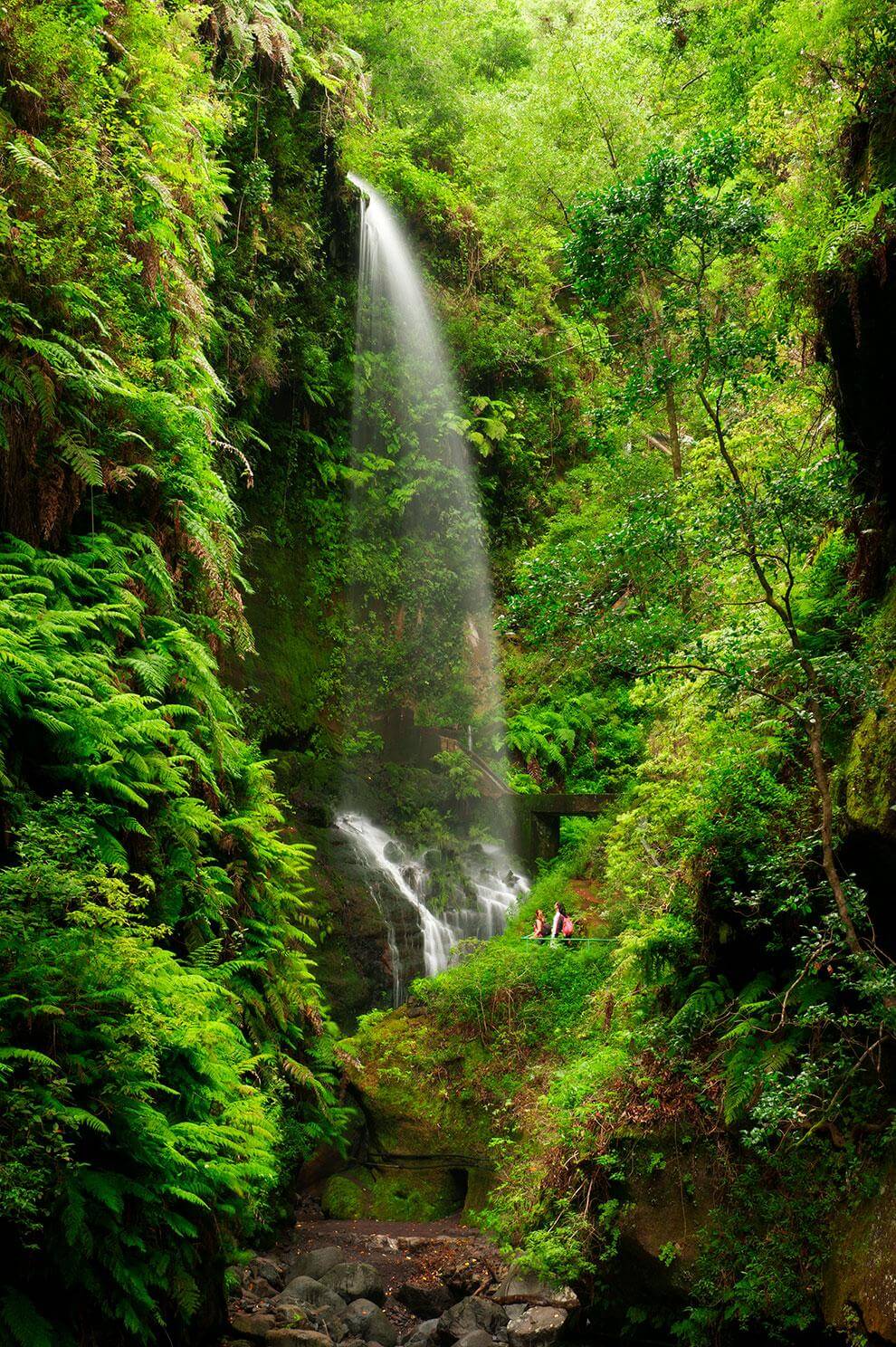Located in the northeast of La Palma, San Andrés y Sauces is the first municipality on the island that had a Biosphere Reserve, as it is green, lush and, in addition, the cradle of water in La Palma. It is also an ideal place to eat fresh fish, bathe in its volcanic pools, visit the forest of Los Tilos and try fresh yam with honey.

A Place with a Lot of History
With an area of almost 44 km2, the municipality of San Andrés y Sauces is located between the towns of Barlovento and Puntallana. For decades this small municipality was the capital of the region, thanks to its waters from the nacientes de Marcos y Cordero,sources that feed farms, especially the large areas of banana plantations. The path to these springs is one of the most popular hiking trails on the island. It starts from Casa del Monte, which is accessed by 4x4 taxi, and goes through 13 water tunnels. You can do the entire route, going down, on a steep descending slope, to the heart of the Bosque de los Tilos.
Several banana and yam plantations are now concentrated in San Andrés y Sauces, as well as a rum distillery (in Puerto Espíndola), which allow visitors to delight in local products. In addition, the curious who stroll through the streets of San Andrés will find centuries-old buildings, such as the small church of San Andrés Apóstol, declared an Asset of Cultural Interest and home to important examples of the rich religious heritage of the island.
One of the most comfortable routes to do with the family is the one going from San Andrés to Charco Azul, just 1.5 kilometers of walking in which the visitor will find old davits or the lime kiln.












El Tendal Archaeological Park
Travelling to the past is also possible at the El Tendal Archaeological Park.The Benahoaritas, former inhabitants of the island of La Palma, are the study center of this complex located in the town of San Andrés y Sauces. To learn how this ancient culture lived, there is nothing like visiting the Visitor Center of the park itself, where the customs, beliefs and origin of the Benahoaritas are explained.
The biggest attraction of the park, however, is the enormous El Tendal cave, whose 60 meters and 16 cavities house relics, seeds and everyday objects of the Benahoarites.
The Forest of Los Tilos
Located in the Natural Park of Las Nieves, the forest of Los Tilos is home to one of the best examples of laurisilva of all the Canary Islands. This natural treasure, which once became the first Biosphere Reserve of the island, preserves all the splendor of this species inherited from the Tertiary period.
Through a trail that looks like something out of a fairy tale, hikers will be able to nourish their senses with a flora that highlights species of vineyards, Picconia excelsa, aurele, small-leaved holly, and the extraordinary giant ferns . There is also an Interpretation Center that has a permanent exhibition to explain the values of the environment. Near this building there is a waterfall that will delight the visitor. The forest offers different alternative trails such as climbing the Crossed Breakwater or the Topo de las Barandas Viewpoint or, already more demanding, the springs of Marcos and Cordero, although this is usually done in the opposite direction
Diving in Puerto Espíndola and Swimming in the Charco Azul
One of the most inspiring walks on the island is the one that leads from the municipality of San Andrés y Sauces to the well-known Charco Azul, one of the most popular natural pools in La Palma. This bathing area has become a natural attraction thanks to the characteristics of the pool, which is large and protected from the waves, making it ideal for the whole family.
Familiarizing yourself with the seabed of the island is possible in the area of Puerto de Espíndola, where diving enthusiasts can contemplate sea sponges, to soft corals, medregals or abades, among other species. It is also possible to eat fresh fish in these areas, as well as in San Andrés.






Festivals and Celebrations
Among the most outstanding celebrations of San Andrés are two celebrations that take place during the carnival. On the one hand, the Burial of the Sardine, which marks the end of the carnival, is one of the most outstanding festivals in the municipality.
For a few years, and as a prelude to the Burial of the Sardine, the town also celebrates a peculiar feast known as the Wedding of the 60s , in which all the locals dress up in clothes from this decade.








